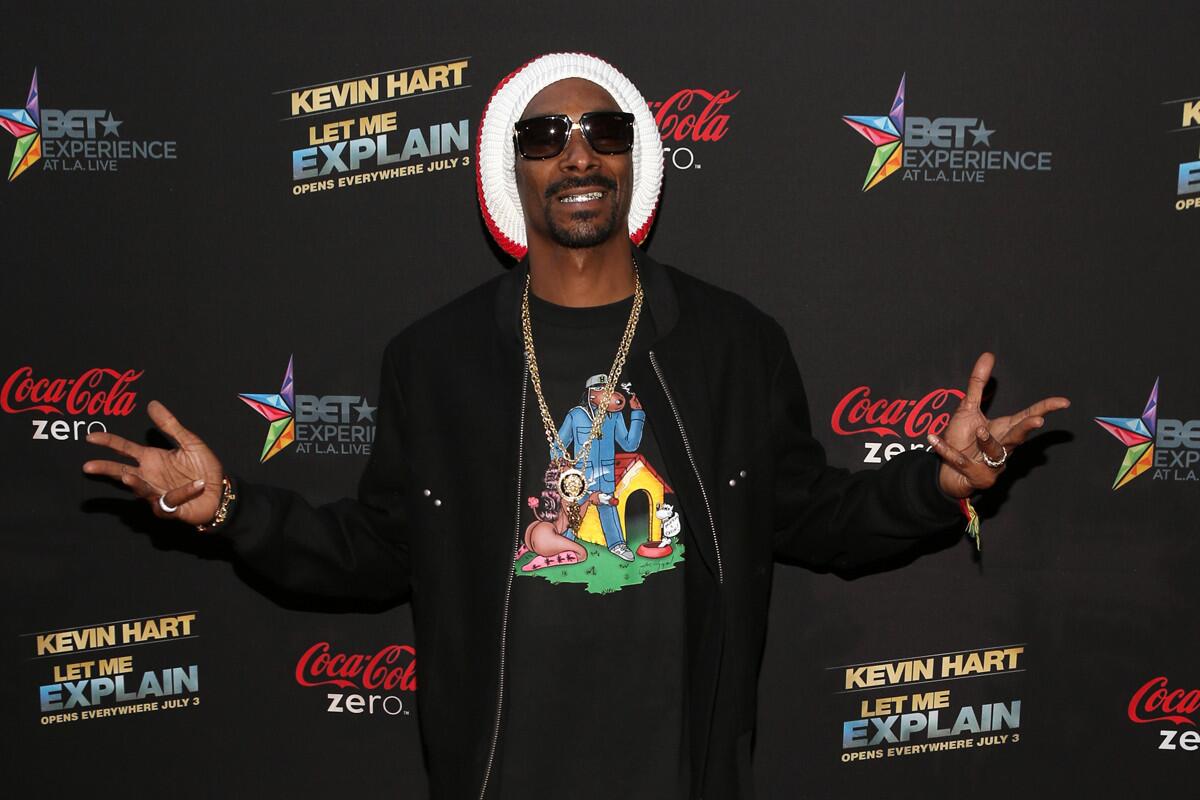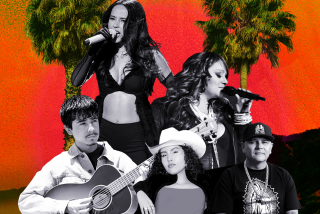BET Festival a showcase for a new L.A. vibe

There is a particular sound to the R&B and hip-hop music coming out of Los Angeles right now, an approach stylistically distinctive from the current rhythms emanating from New York, Atlanta or Chicago.
Despite predictions that the Internet would render moot such differences, a regionalism that in the past birthed and defined subgenres including cool jazz, surf rock, hard-core punk and gangsta rap is forging a new music that’s uniquely of this town.
Those wondering whether it’s still possible for a distinct sound to blossom in a region, far enough away from the tyranny of commercial strains, to create a surprising new time stamp, can look not only to Los Angeles but also to this weekend’s BET Festival at L.A. Live.
TIMELINE: Summer’s must-see concerts
The festival couldn’t land at a better time. The roster for Saturday night’s Staples Center show includes the two most promising male voices to come out of Southern California in a few years: San Pedro-born Miguel and Compton-raised Kendrick Lamar, both of whom released excellent and commercially successful albums in 2012.
They’ll perform alongside rising Compton rapper Schoolboy Q (who, along with Lamar, Jay Rock and Ab-Soul, comprise the Black Hippy collective) and headliner Snoop Dogg, purveyor of the so-called G-funk sound. That particular vibe came to define the early ‘90s work of Dr. Dre and N.W.A, Death Row Records and the artist formerly known as Snoop Doggy Dogg, born in South L.A. a quarter century ago. (North Carolina-raised J. Cole is also on the bill.)
Vibe: It’s a word that Lamar harnesses on his hit anthem “Bitch Don’t Kill My Vibe,” which stormed the rap charts last year to become a singalong favorite. Southern California has long been built on vibe, beauty and bliss — on the metaphorical breeze blowing in from the ocean and the sexy men and women who run the beaches. Lamar’s description of L.A. in “The Recipe” suggests three essential ingredients for today: “women, weed and weather.” Add in the city’s roads and he’s got a valid argument.
BET 2012 PHOTOS: The show | Arrivals
These lyricists seldom focus on the beach. Rather, in 2013, Lamar and his peers are riding the roads to the top of the world. Lamar prefers to set his lyrics on Rosecrans in Compton or on the way to house parties in El Segundo. He lauds internal waves brought on by a blend of medicinal marijuana, alcohol, Xanax and magic mushrooms — what he calls “grown-up candy for pain” — over the real ones the Beach Boys used to ride off the coast.
He sings about money trees and the canals near Venice Beach, raps of riding down Long Beach Boulevard, but doesn’t mention palm trees or the ocean on his 2012 breakout, “good kid, m.A.A.d. city.” He acknowledges the heat not in reference to the California sun but to a broken air conditioner. Surely, “Swimming Pools” refers to the luxury of the Hollywood Hills or the view of the L.A. basin, right? It’s about drowning in alcohol, and a murder.
That’s a far cry from “Gin & Juice,” Snoop’s ode to staying up all night with Dr. Dre and some women and living the California dream. The modern-day lifestyle update of “Gin & Juice” is a little heavier: Schoolboy Q’s cruising anthem “Hands on the Wheel” from 2012 suggests a driver in need of a sober friend: “Too damn high, can’t stand myself,” he raps. “I love drunk driving, man I’m something else.”
Though responsible citizens might describe Schoolboy’s admission more harshly, his words capture the road in ways that a subway-bound New Yorker or a freezing wintertime Chicagoan couldn’t, or wouldn’t.
Unlike Lamar, Miguel uses the beach and the Pacific, as well as a fair share of weed, as lures. Miguel on “Kaleidoscope Dream” prefers the nighttime breeze blowing through bedroom curtains to the rush of wind on the 405. Yes, his is more a California of the imagination than the reality of San Pedro. He’s certainly not addressing the love lives of the dockworkers that populate his hometown; he’s focused on the dream world 25 miles up the 110 in L.A. proper.
On “Use Me,” he addresses desire by comparing it to the natural movement of waves across sand, of the moon moving the tides. The sun’s acknowledged not while it’s bearing down, but as it’s rising after a night on the dance floor. On “Do You ...” he wonders on a women’s tastes by asking her about “midnight summers” and whether she likes to swim on private beaches.
Much of the music that drives Miguel’s seduction is as breezy as his come-on, a trait shared by Lamar and his team of producers. Though the two work in different subgenres, both prefer muffled, round bass sounds to popping, in-your-face kick and snare tones. Miguel, who produced much of “Kaleidoscope Dream,” finds pleasure in pillowed sounds.
PHOTOS: Best albums of 2012 | Randall Roberts
You can hear an echo of that in “Collard Greens,” the new Schoolboy Q (featuring Lamar) ode to — what else — marijuana, which features a beat that thrives on minimal tension and a humming vibe. “Play my favorite tempo,” says Schoolboy, who grew up in Crenshaw, as a rhythm created by a producer named THC crawls patiently. Schoolboy later suggests that the pot circling the room make a diversion: “Weed steady blowing, pass that blunt to my mama, runs in the family,” he explains.
It also runs in the area, along with a certain rolling vibe uniquely of this town. Yes, the vibe changes depending on whether you’re in Compton or Ladera Heights — “Come and visit the tire screeching, ambulance, policeman,” raps Lamar on “Compton,” sounding like the world’s worst ambassador. But the underlying groove offers a certain comfort, as if, despite the troubles, things could be worse.
And they could be worse. There’s no rain in the forecast.
More to Read
The biggest entertainment stories
Get our big stories about Hollywood, film, television, music, arts, culture and more right in your inbox as soon as they publish.
You may occasionally receive promotional content from the Los Angeles Times.










